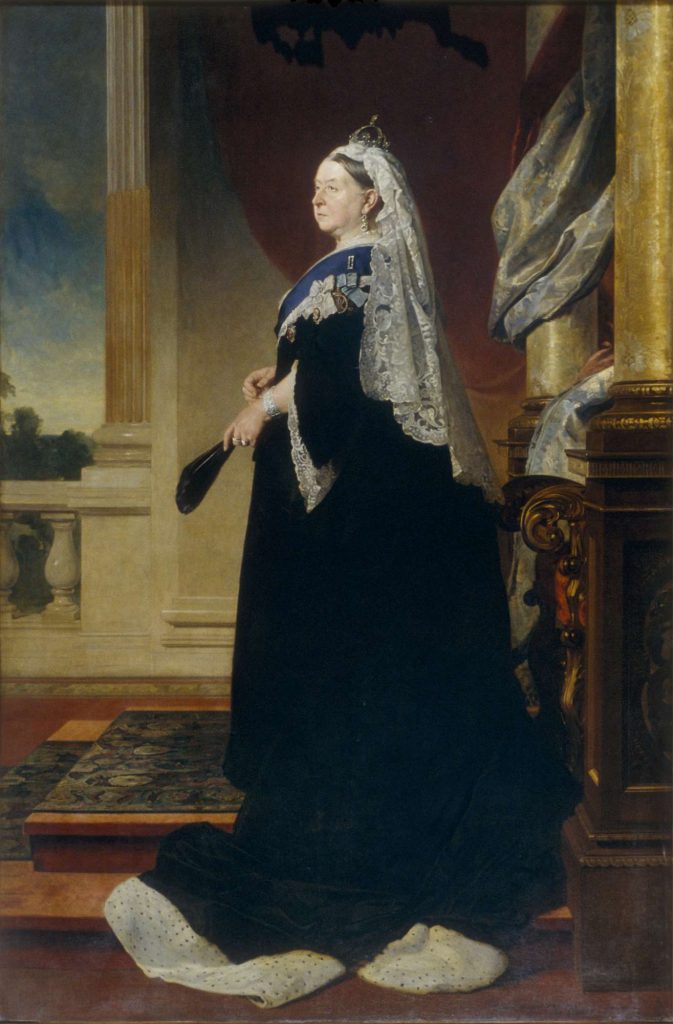From decoration to diplomacy
From the late 19th to the early 20th centuries, portraits and landscape paintings were bought, borrowed, commissioned or received for display in government buildings. Images of British monarchs and famous figures brought a sense of stature to entrance halls and state rooms.

Interior of the British Embassy in Paris in the early 1900s, showing a large, full-length portrait of Edward VII. © Private Collection of Tim Knox and Todd Longstaffe-Gowan, London
In 1899, a professional copyist was commissioned to reproduce Heinrich von Angeli’s stately portrait of Queen Victoria, that shows the monarch two years before her death.

Queen Victoria (1819-1901) by Heinrich von Angeli (after), 1899
A pair of portraits of King George III and Queen Charlotte (copies of the 1761 originals by Allan Ramsay) was donated by Lord Duveen in 1939 to the newly-built British Embassy in Washington D.C. The ambassador, Lord Lothian, enjoyed referring mischievously to the King’s portrait as that of the ‘Founder of the American Republic’. Guests would wonder why George Washington looked so different!
The presence of such works in embassies began to raise awareness amongst diplomats and others of the role that art could play in these places.

King George III (1738-1820) Reigned 1760-1820 by Allan Ramsay (after)

Charlotte Sophia of Mecklenburg-Strelitz (1744-1818) Queen of King George III by Allan Ramsay (after)